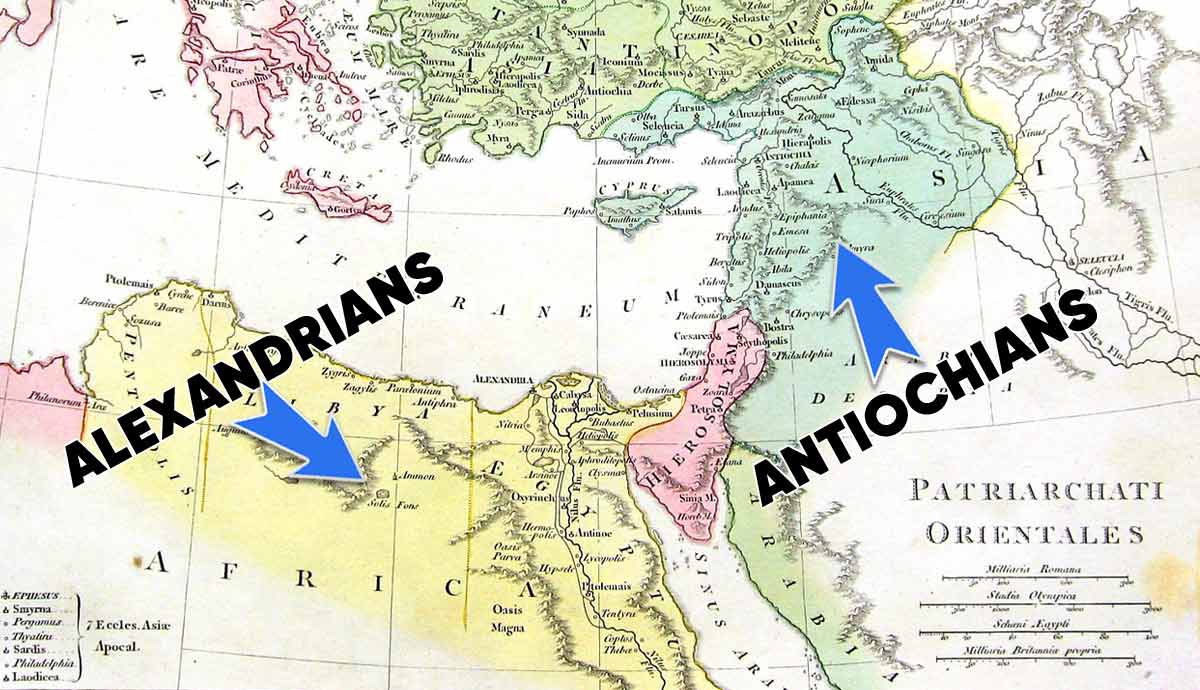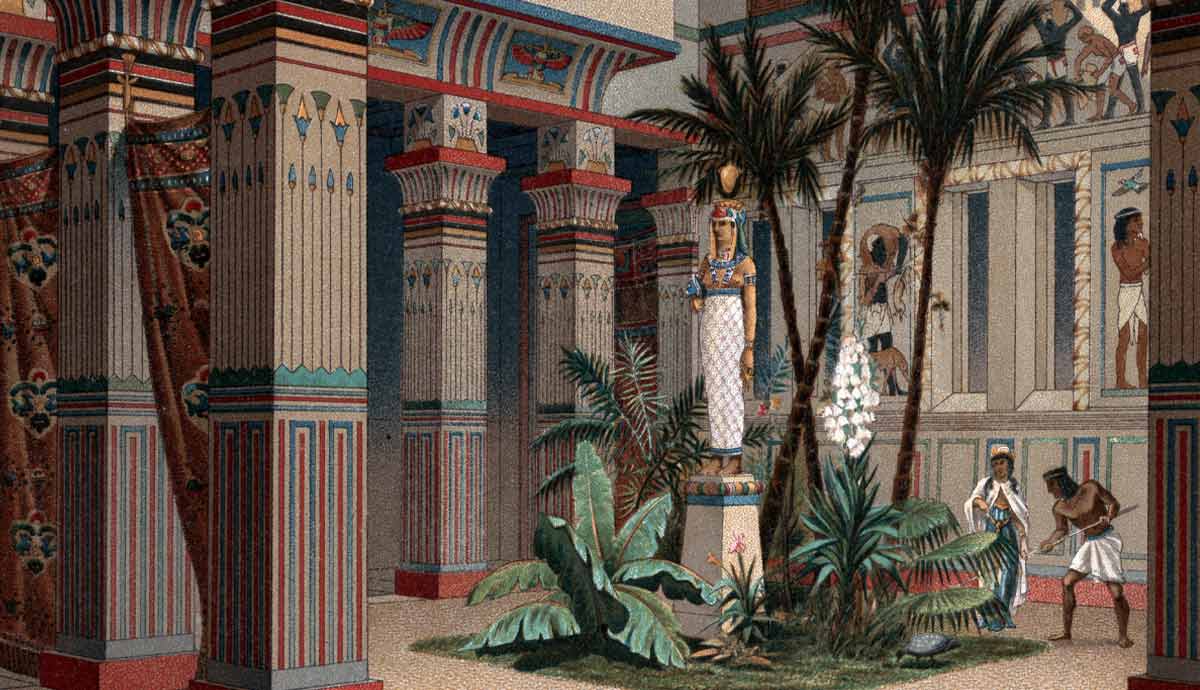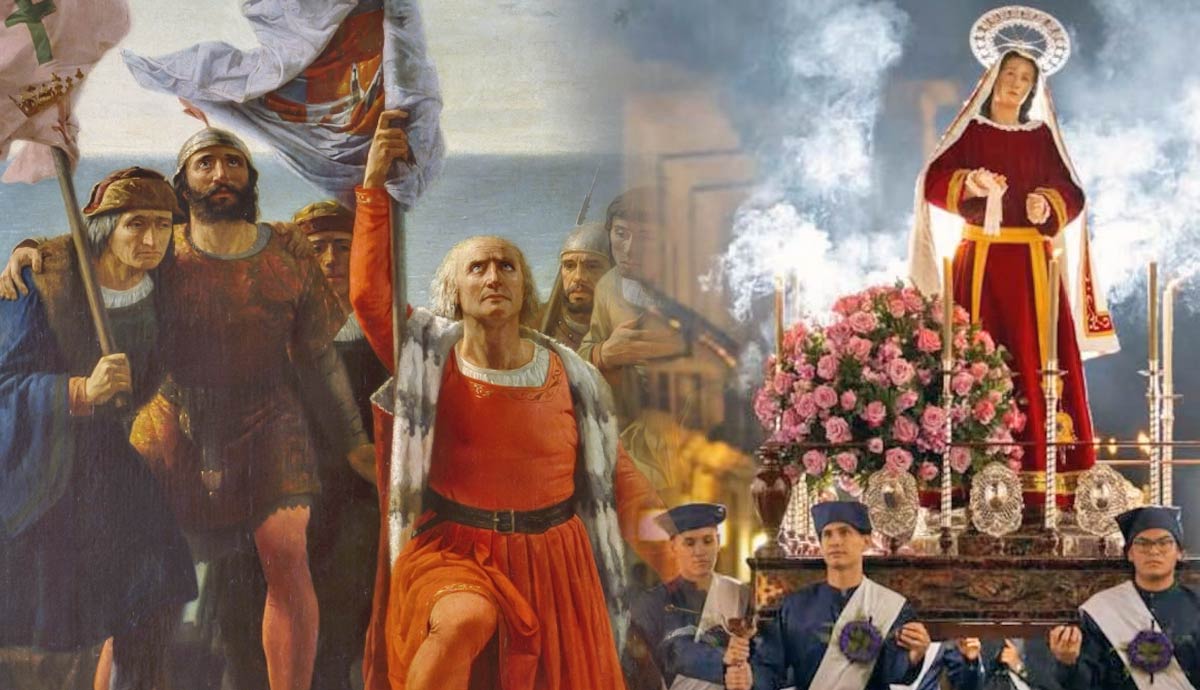
www.thecollector.com
How the Spanish Spread Christianity in the Americas
The evangelization of the Americas is the historical process through which Spanish colonizers converted Indigenous people to Christianity, beginning with Christopher Columbus’s 1492 arrival in the Americas. The expansion of Christianity had the support and sponsorship of the Pope and the Catholic Monarchs of Spain, who believed that every colonizer had a right to the land in exchange for evangelizing the Indigenous workforce.
Christianizing the Americas: Early Steps
“The First Landing of Christopher Columbus in America” by Díscoro Teófilo Puebla y Tolín, 1862. Source: Museo del Prado
European colonial powers believed that their societies were more developed than the rest of the world and that they were responsible for civilizing people they saw as barbarians or savage communities. In this regard, conversion to Christianity was the primary tool used to not only instruct conquered peoples in a new faith but to force them to adapt to the new “civilized” society. The evangelization of the Americas was, therefore, not only a religious process but also a political, economic, and cultural one that facilitated the project of colonialism.
For centuries before Christopher Columbus “discovered” the Americas, Christianity had been at the center of European societies, and it was intrinsically related to the development of civilization, especially in the Iberian Peninsula, characterized by fighting against non-Christian cultural and religious expression, including Islam and Judaism.
When Columbus arrived in the Americas, a Franciscan friar named Pedro de Arenas celebrated the first mass in the newly “discovered” lands, specifically on the island of Guanahani. This was the first island where Columbus landed, and the Taino Indians already inhabited it. The island was renamed San Salvador and is now part of the Bahamas.
Columbus had met Arenas in Spain, where he asked him to be his confessor and to join his adventure. Building the first altar for worshiping the Christian God in these lands, Arenas initiated a long-lasting process of evangelization of the Americas, which accompanied the imposition of Spain’s colonial societal structures and systems of beliefs.
Portrait of Alexander VI by Pedro Berruguete, 1492-1503. Source: Wikimedia Commons
The Dominicans and Franciscans were the first missionary orders that arrived on the American continent, followed by the Order of the Blessed Virgin Mary of Mercy, the Order of Saint Augustine, and the Jesuits. In spreading Christian knowledge, the priests and friars who traveled from Spain to the Americas studied Indigenous people’s cultures and languages, resulting in multiple historiographic chronicles that account for the first years of the conquest of the Americas.
In 1493, Pope Alexander VI had issued a papal decree called Inter Caetera, where he authorized Spain and Portugal to own the lands of the Americas and enslave its inhabitants. This, together with Jesuit beliefs that the world was close to its end and Boniface VIII’s papal bull of 1302 declaring that nobody could be granted salvation without baptism, pressured the arriving missionaries to provide the sacrament to as many Indigenous people as possible. Missionaries firmly believed that any Indigenous person could become a Christian.
When the Catholic Monarchs of Spain, Queen Isabella I of Castile and King Ferdinand II of Aragon, learned about the Indigenous communities living in those faraway lands, they found in Columbus’s travels an opportunity to spread Christianity through cultural and religious indoctrination. In 1524, the Spanish Empire created an administrative organ in charge of the conquest of the Americas called the “Council of the Indies,” which a priest often led. This illustrates how the church was closely related to the project of colonial expansion and its cultural, economic, and military facets.
Statue of Fray Bernardo by Manuel Fuxà, 1888. Source: Wikimedia Commons
On Columbus’ second trip, in 1493, another Benedictine friar, Bernardo Boyl, accompanied him with other priests recruited in Seville. Boyl had been assigned as a pontifical delegate by Pope Alexander VI for the “New World” mission. However, after unsuccessful trials of mutual understanding with the Indigenous communities of La Española (now the Dominican Republic and Haiti) and clashes of opinions with Columbus, Boyl returned to Spain one year later. He left behind three Franciscan priests, one of whom was called Jerónimo Ramón Pané, known for being the first European to try to learn the local Indigenous language to facilitate the transmission of Christian knowledge.
Expansion: Christianity in Central and South America
Cathedral Basilica of Our Lady of the Incarnation, Archdiocese of Santo Domingo by Julio González, 2007. Source: UNESCO
The island of La Española was where the first Franciscan and Dominican priests crafted a plan to expand their missions on the continent. Churches were built in the capital, Santo Domingo, and later, priests traveled to neighboring Antilles islands.
The first diocese in the Americas was created in Santo Domingo in 1511, followed by Puerto Rico the same year and Jamaica in 1515. In 1513, the diocese of Panamá was created, known to be the first ecclesiastical center on the continent, from which missionaries traveled to Central America and towards South America.
After the Catholic church settled in Central America and expanded to Mexico, facilitated by the arrival of Hernán Cortés in 1519, more than a decade later, in 1531, Francisco Pizarro arrived in Peru, home of the Incas. By 1534, when two priests, Vicente de Valverde and Juan de Sosa, arrived, Pizarro had captured Cuzco. De Valverde was assigned as the first bishop of Cuzco, the first diocese of South America. As a result, a convent was built over the ruins of an Incan religious temple dedicated to the adoration of the Sun, Qoricancha.
Detail of “The Victory of Cajamarca” portraying the bishop of Cuzco, Vicente de Valverde, unknown artist, 1650. Source: Wikimedia Commons
Later, in 1541, the Diocese of Lima was founded, which became an archdiocese in 1547 and was the leading Catholic center of South America. From there, missions expanded to Quito, with Fray Hernando de Granada leading the evangelization of Ecuador and Colombia. In 1546, the diocese of Quito in Ecuador opened, and another in Popayán, Colombia, was founded. Later on, the church traveled southward to what are today Bolivia, Argentina, and Chile with Diego de Almagro and the priests Antonio Solís, Antonio de Almansa, and Cristóbal Molina. In 1552, the Diocese of La Plata was founded, becoming an archdiocese in 1609.
While Catholicism was expanding across the lands colonized by the Spanish crown, the Portuguese evangelized the territories of present-day Brazil. In 1551, a diocese was founded in Salvador de Bahía, which became an archdiocese in 1676, ruling over the newly founded dioceses of Pernambuco, Rio de Janeiro, Mariana, and Sao Paolo. Through Brazil, the Franciscans, Capuchins, and Jesuits reached and expanded further into South America, particularly in the Amazon Rainforest.
Evangelizing Among the Indigenous: Tactics
Photo of the archaeological site of Tlatelolco in Mexico City showing the Church of Santiago Tlatelolco, built over Prehispanic Mexica sacred sites, Greg Schechter, 2012. Source: Wikimedia Commons
When Europeans arrived in the Americas, every aspect of Indigenous religious adoration practices was considered pagan and a threat to Christianity. Because of this, Spanish conquistadors and friars destroyed Indigenous sacred places and monuments. For instance, the first masses took place in Mexico in Indigenous temples. Moreover, it has been found that churches were built by reusing the remaining stones from Prehispanic Mexica temples or Teocallis. To facilitate conversion, crosses were anchored over the ruins of old sacred sites so places of adoration would not change, but instead, foreign beliefs, images, and symbols were imposed.
Because of linguistic differences, catechesis was challenging. Towards the middle of the 16th century, the Council of Trent, convoked by Pope Paul III between 1545 and 1563 as a response to Protestantism, forbade the translation of the sacraments to Indigenous languages, which prompted missionaries to teach the Spanish language to the locals.
During the 16th century, most indigenous people’s evangelization happened through the encomienda, an economic system that granted colonists the right to Indigenous lands and their workforce. Under this model, Spanish conquerors were able to impel Indigenous people to forced labor in exchange for protection. The colonizers had the duty of instructing them in Christian beliefs and the Spanish language, as requested by the crown. It was the encomenderos who were responsible for not only evangelizing Indigenous people, who, after conversion, could participate in viceroyalty society, but also to condemn and punish any remaining expressions of pagan cultural, religious, or linguistic practices.
Illustration of an encomendero abusing an Indigenous person from the Tepetlaoztoc Codex, c. 1550s. Source: British Museum
In places the system of encomiendas could not reach because of hostile environmental and geographical conditions, missionaries would explore terrains to reach more isolated indigenous tribes. When this was the case, a rudimentary chapel was built on-site, probably after violent exchanges between the missionaries and the local people. If successful, an Indigenous community would be dispossessed of their native beliefs and converted to Christianity. Around the chapel, converted Indigenous people grouped, forming what was called a doctrina. A doctrinero was the priest in charge of teaching the Christian doctrine, many times using reinforcement methods of punishment and torture.
Photo of a doctrina in Sáchica, Colombia, by Carlos Martínez, 2010. Source: Wikimedia Commons
The excesses of violence exercised by Spanish conquistadors and missionaries were well documented by Friar Saint Bartolomé de las Casas, who in 1552 published “A Short Account of the Destruction of the Indies,” a collection of manuscripts sent to Prince Philip II of Spain.
Another method used by the Jesuits, Franciscans, Capuchins, and Dominicans to evangelize the American Indigenous communities was the reducción. These were small population centers where nomadic Indigenous people congregated. These small villages had independent governmental systems led by missionaries and aimed to “protect” people from the encomenderos.
The Christian Faith in Latin America and the Caribbean Today
Photo of Semana Santa (Holy Week) celebrations in Popayán, Colombia, Junta Pro Semana Santa Popayán, 2024. Source: Semana
Catholicism has accompanied the development of Latin American societies and cultures through to the present. Catholic beliefs and practices are today intrinsic to people’s culture, expressed in yearly celebrations and holidays such as Christmas, Easter, and many saints’ commemorative events. The church also shaped how Latin Americans conceive moral and social institutions such as family, marriage, and reproduction. On the continent, most Catholic believers are concentrated in Mexico, Argentina, Ecuador, Peru, and Colombia, while Protestantism and Evangelism have gained relevance in Brazil and Venezuela.
Catholicism has also influenced Latin American architecture, literature, and music. For instance, when visiting South and Central American cities and villages, it is common to see a church in the central square, a remnant of colonial urban planning that placed Catholicism at the physical center of social, religious, and political life.
Photo of Bolívar Square in Bogotá, Colombia, showing the Primatial Cathedral of Bogotá at the right. Source: Visit Bogotá
However, syncretisms have been present alongside the historical development of the Catholic faith in different regions and amongst different communities, in particular, due to the transatlantic slave trade and the subsequent introduction of African religious practices.
During the 19th century, the relationship between people and Catholicism changed. Independence and consolidation of modern states separate from the Spanish Empire accompanied a paradigm shift in how people now conceive of religion as an individual choice when it became a facet of life no longer bound to civil rights. After five centuries of Catholic domination, this has caused the Church to lose power and believers.
Many Catholics have converted to Protestantism in countries such as Brazil, where Catholic representation dropped from 95% to 61%, and in Mexico, falling from 99% to 81% between 1970 and 2014. A decrease in the Catholic population is even more pronounced in some Central American countries, such as Nicaragua, El Salvador, Guatemala, and Chile, where non-believers increased rapidly.













